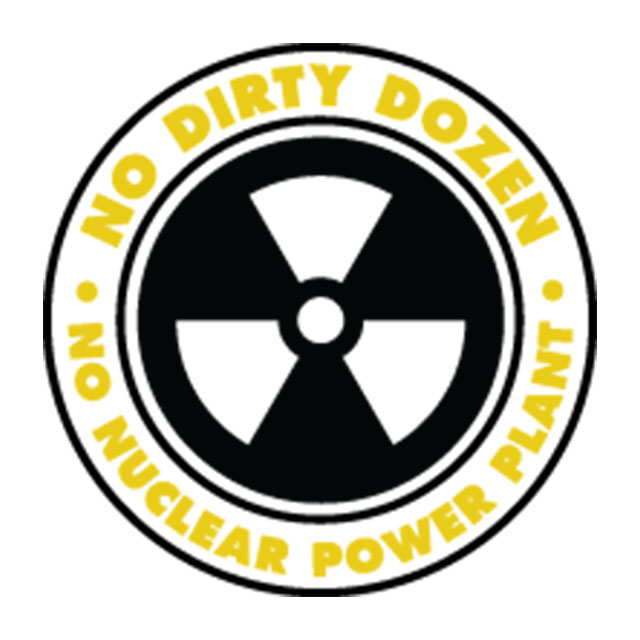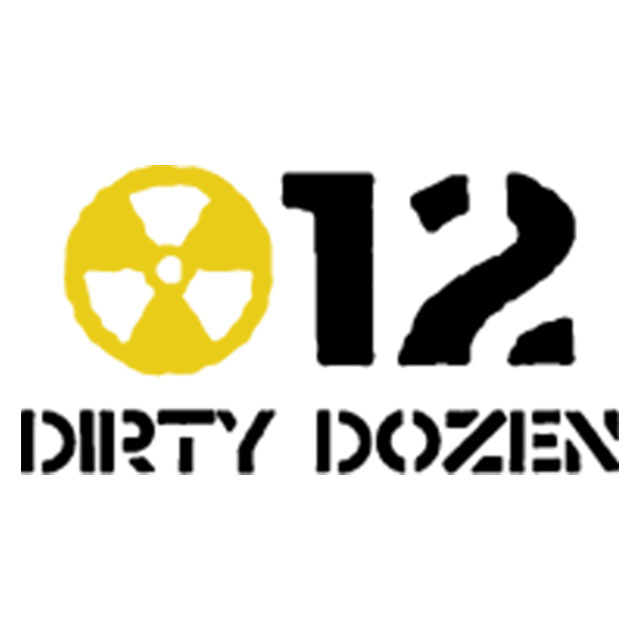Dirty Dozen Fact Sheet
Nuclear power is enormously expensive, consumes massive amounts of water, and produces nuclear waste that future generations will have to address for tens of thousands, if not hundreds of thousands, of years. The Dirty Dozen proposal is based on a new, untested type of nuclear reactor. And NuScale wants to experiment with this new nuclear power plant in Idaho above the Snake River Aquifer.
Idaho Gets All the Risk and the Waste
Virtually none of the electricity that could be generated by the Dirty Dozen will support Idahoans. We, however, will get all of the nuclear waste and the risks associated with operating a first-of-its-kind nuclear power plant. Idahoans have spent decades trying to clean up nuclear waste that has been shipped here from other places. Now an out-of-state company wants to build a nuclear power plant that will provide taxpayer subsidized electricity to Utah communities and generate radioactive waste that will stay in Idaho in perpetuity.
Nuclear Power is Crazy Expensive
Nuclear power is substantially more expensive than other energy sources. Lazard’s latest annual Levelized Cost of Energy Analysis (LCOE 13.0) provided the following comparison solar, wind, and new nuclear projects:
Utility-scale thin-film solar: $32–42/MWh
Wind: $28–54/MWh
New nuclear: $118–192/MWh
Similarly, an Energy Strategies study concluded that various combinations of wind, solar, energy storage, market purchases, and small amounts of natural gas were roughly 40% cheaper than small modular nuclear reactors. The alternative scenarios represent hundreds of millions of dollars in savings over a 20-year period in comparison to projects like the Dirty Dozen.
Nuclear Power Depends on Dirty Fossil Fuels
Nuclear power is a prodigious user of fossil fuels. Like all nuclear power plants, the Dirty Dozen will require continuous supplies of uranium for the entire life of the power plant. This requires the ongoing mining of uranium ore for fuel, which has to be crushed and milled, and enriched to provide the uranium for the nuclear reactors. The power plant itself depends on creating the concrete and steel for the reactors, and storing the thermally and radioactively hot nuclear waste. All of these activities rely on the consumption of fossil fuels for decades.
Nuclear Power Wastes Idaho Water
Of all the ways to generate electricity, nuclear power generation is the most water intensive. NuScale officials acknowledge that this type of reactor would be even less thermally efficient than traditional reactors. The Dirty Dozen might use as much as 25% more water to produce the same amount of electricity. All of the water that cools nuclear reactors becomes heavily contaminated with radioactive material. And NuScale plans to place the 12 nuclear reactors in an underground swimming pool (located above the Snake River Aquifer). Thus, if the nuclear power plant is built, water users downstream from the nuclear power plant would have yet another reason to worry about adverse impacts of nuclear power on the quantity and quality of the water in the Snake River.
Even Dirtier Than Traditional Reactors
The Dirty Dozen nuclear reactors would use 40% more enriched uranium fuel to produce a megawatt of electricity than regular reactors. This means the nuclear power plant would produce even more intensely radioactive waste than traditional nuclear technology. Our country still has no final repository for all of the nuclear waste we already have (despite researching the issue for more than 70 years), so the radioactive waste from the Dirty Dozen would stay in Idaho (and above the Snake River Aquifer) for thousands of years!
Threats to Idaho’s Public Health and Safety
Nuclear accidents happen even under the best of circumstances, and the Dirty Dozen reactors would be new and untested. To reduce nuclear power’s enormous costs, developers of the new nuclear reactors, including NuScale, rely on cost-cutting measures that will cut safety margins as well. NuScale claims its never before tested "passive" design is inherently safe and it does not even need pumps, so it will not need emergency generators. (The Fukushima disaster was exacerbated by the fact because there was no electricity to run the pumps for the water that cooled the reactors.) NuScale also wants the Nuclear Regulatory Commission to shrink the emergency planning zone to the facility’s fence line. The Dirty Dozen’s effort to cut corners and reduce costs further amplifies the risk to our entire region.
Taxpayers Forced to Bail Out the Nuclear Industry (Again ... And Again)
Nuclear power is so expensive that if fails over and over again, leaving taxpayers and ratepayers to pick up the tab. For example, the nuclear industry wants a $1.5 billion bailout for uranium mining. In Ohio, an energy company got a $1.1 billion bailout after two nuclear power plants failed. And now the nuclear industry is pushing for a $23 billion bailout, providing convincing proof that the private markets have rejected nuclear power as too costly, slow, inefficient, and dangerous.
Thus it is no surprise that to date, the Utah group has only been able to convince its own member utilities to agree to purchase the electricity from just two of the 12 planned nuclear reactors. As a result, taxpayers will have to pay for the remaining power. Even worse, the Utah group wants to lock in inflated nuclear costs for the next 40 years, rather than the current limit of 10-year contracts for federal agencies (as the costs for renewable energy continue to decline). Idaho National Laboratory has plans to sign up for two of the new nuclear modules (one for research and the other for electricity), which together would produce 120 MW–more than four times as much electricity as INL uses in an average year–and the power will cost more than INL currently pays.




